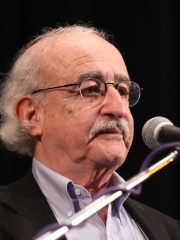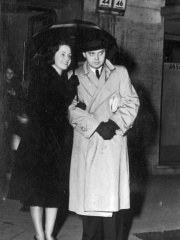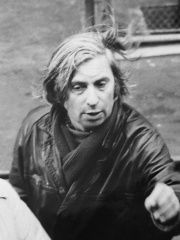





The Most Famous
FILM DIRECTORS from Slovakia
This page contains a list of the greatest Slovak Film Directors. The pantheon dataset contains 2,041 Film Directors, 7 of which were born in Slovakia. This makes Slovakia the birth place of the 41st most number of Film Directors behind Pakistan, and Greece.
Top 7
The following people are considered by Pantheon to be the most legendary Slovak Film Directors of all time. This list of famous Slovak Film Directors is sorted by HPI (Historical Popularity Index), a metric that aggregates information on a biography's online popularity.

1. Ivan Reitman (1946 - 2022)
With an HPI of 67.25, Ivan Reitman is the most famous Slovak Film Director. His biography has been translated into 45 different languages on wikipedia.
Ivan Reitman (; October 27, 1946 – February 12, 2022) was a Canadian film director and producer. He was known for his comedy films, especially in the 1980s and 1990s. Reitman was the owner of The Montecito Picture Company, founded in 1998. Films he directed include Meatballs (1979), Stripes (1981), Ghostbusters (1984), Twins (1988), Ghostbusters II (1989), Kindergarten Cop (1990), Dave (1993), Junior (1994) and Draft Day (2014). Reitman also served as producer for such films as National Lampoon's Animal House (1978), Heavy Metal (1981), Space Jam (1996) and Private Parts (1997).

2. Juraj Jakubisko (1938 - 2023)
With an HPI of 60.95, Juraj Jakubisko is the 2nd most famous Slovak Film Director. His biography has been translated into 24 different languages.
Juraj Jakubisko (30 April 1938 – 24 February 2023) was a Slovak film director. He directed fifteen feature films, between 1967 and 2008. He often took on the dual role of cinematographer in his films, as well as writing or co-writing the scripts. In 2000 he was named the Best Slovak Director of the 20th century by film critics and journalists. His work is often described as magical realism.

3. Juraj Herz (1934 - 2018)
With an HPI of 59.88, Juraj Herz is the 3rd most famous Slovak Film Director. His biography has been translated into 17 different languages.
Juraj Herz (4 September 1934 – 8 April 2018) was a Slovak film director, actor, and scene designer, associated with the Czechoslovak New Wave movement of the 1960s. He is best known for his 1969 horror/black comedy The Cremator, often cited as one of the best Czechoslovak films of all time, though many of his other films achieved cult status. He directed for both film and television, and in the latter capacity he directed episodes of a French-Czech television series based on George Simenon's Maigret novels.

4. Géza von Radványi (1907 - 1986)
With an HPI of 59.68, Géza von Radványi is the 4th most famous Slovak Film Director. Her biography has been translated into 19 different languages.
Géza von Radványi (born Géza Grosschmid; 26 September 1907 – 27 November 1986) was a Hungarian film director, cinematographer, producer and writer.

5. Jaromil Jireš (1935 - 2001)
With an HPI of 58.64, Jaromil Jireš is the 5th most famous Slovak Film Director. His biography has been translated into 20 different languages.
Jaromil Jireš (10 December 1935 – 24 October 2001) was a Czech film director and screenwriter. He was associated with the Czechoslovak New Wave movement.

6. Štefan Uher (1930 - 1993)
With an HPI of 55.63, Štefan Uher is the 6th most famous Slovak Film Director. His biography has been translated into 16 different languages.
Štefan Uher (4 July 1930 – 29 March 1993) was a Slovak film director, one of the members of the Czechoslovak New Wave.

7. Péter Bacsó (1928 - 2009)
With an HPI of 51.57, Péter Bacsó is the 7th most famous Slovak Film Director. His biography has been translated into 15 different languages.
Péter Bacsó (6 January 1928 – 11 March 2009) was a Hungarian film director and screenwriter.
People
Pantheon has 7 people classified as Slovak film directors born between 1907 and 1946. Of these 7, none of them are still alive today. The most famous deceased Slovak film directors include Ivan Reitman, Juraj Jakubisko, and Juraj Herz.
Deceased Slovak Film Directors
Go to all RankingsIvan Reitman
1946 - 2022
HPI: 67.25
Juraj Jakubisko
1938 - 2023
HPI: 60.95
Juraj Herz
1934 - 2018
HPI: 59.88
Géza von Radványi
1907 - 1986
HPI: 59.68
Jaromil Jireš
1935 - 2001
HPI: 58.64
Štefan Uher
1930 - 1993
HPI: 55.63
Péter Bacsó
1928 - 2009
HPI: 51.57
Overlapping Lives
Which Film Directors were alive at the same time? This visualization shows the lifespans of the 7 most globally memorable Film Directors since 1700.

